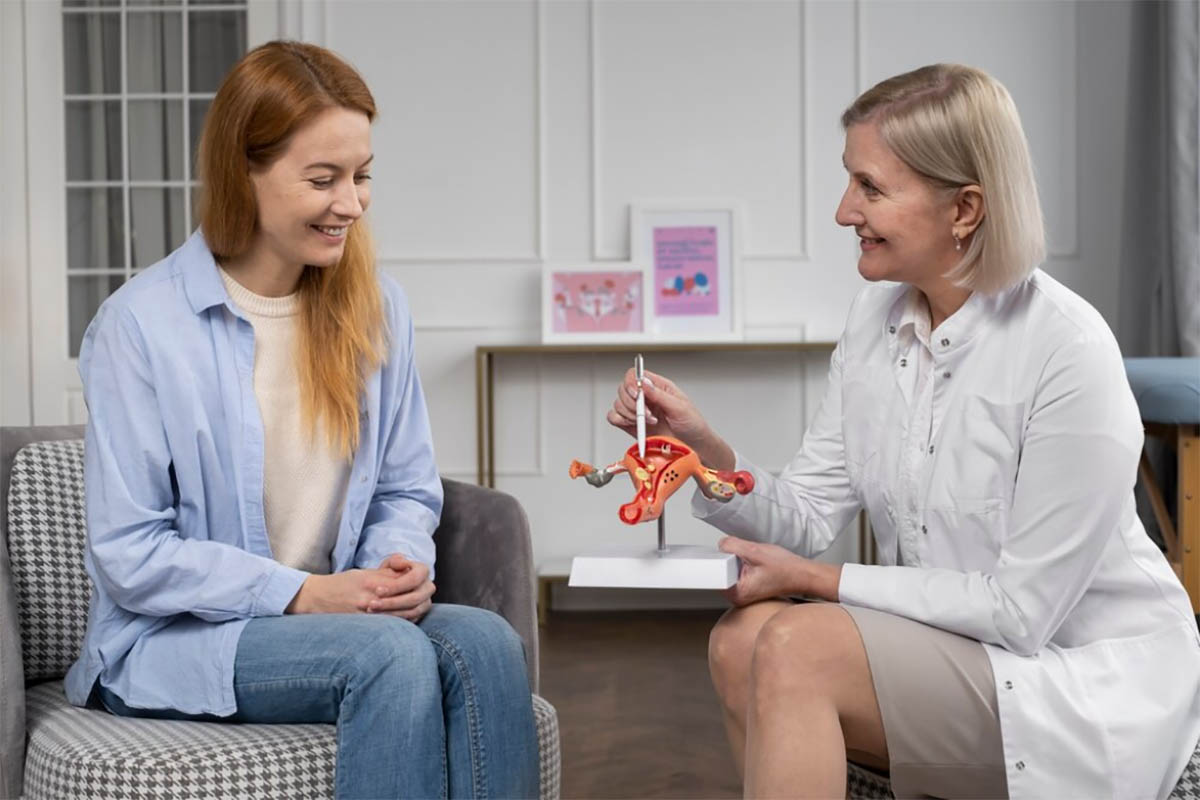Introduction
Pregnancy and childbirth, particularly vaginal birth, are significant life events that bring joy and challenges, often leading to conditions like pelvic organ prolapse. This medical condition impacts a woman’s daily life, and physical, and emotional health profoundly. Understanding the symptoms of vaginal prolapse after birth, its causes, and available treatment options is crucial for new mothers experiencing unexpected postpartum symptoms. This blog aims to shed light on vaginal prolapse, empowering women to handle this condition with knowledge and confidence.
What is Vaginal Prolapse?
Vaginal prolapse, or pelvic prolapse, occurs when pelvic organs fall from their normal position into the vaginal canal due to weakened pelvic floor muscles and connective tissue. This can lead to bothersome symptoms such as pelvic pain and urinary incontinence. Recognizing the symptoms of prolapse early can lead to more effective management and reduce the impact on daily life.
Types of Vaginal Prolapse
Different types of vaginal prolapse address various pelvic organs that may shift from their normal position:
Anterior Vaginal Wall Prolapse (Cystocele or Bladder prolapse): The anterior vaginal prolapse, also known as cystocele, is where the bladder bulges into the vagina, often as a result of weakened pelvic muscles due to childbirth or aging.
Urethrocele: The sagging of the urethra into the vagina, typically accompanying cystocele, affecting urination.
Posterior Vaginal Wall Prolapse: Involves the rectum bulging into the vagina, affecting bowel movements and contributing to a sense of pelvic pressure.
Enterocele: The small intestines descend into the vaginal area, frequently following pelvic surgery or along with other prolapse types.
Uterine Prolapse: The uterus falls into the vaginal space due to weakened pelvic muscles, a common condition after vaginal childbirth.
Vaginal Vault Prolapse: Develops after a hysterectomy, when the top part of the vagina loses its normal support and collapses.
Causes of Vaginal Prolapse

The causes of vaginal prolapse are multifaceted and can include hormonal changes, childbirth trauma, and other risk factors such as chronic constipation, obesity, respiratory issues leading to chronic coughing, heavy lifting, and genetic predisposition.
Recent studies indicate that approximately 35% of new mothers experience symptoms of vaginal prolapse, influenced not only by childbirth but also by factors such as family history, obesity, and existing medical conditions. Although prolapse is more prevalent among women who have given birth, it is not an inevitable outcome for all.
Here are some specific causes of this condition:
Hormonal Changes
Reductions in estrogen levels weaken pelvic tissues, exacerbating the likelihood of prolapse.
Childbirth Trauma
Vaginal childbirth stretches and weakens pelvic floor muscles, contributing significantly to the degree of prolapse experienced.
Other Risk Factors
Include a family history of prolapse, chronic conditions that strain pelvic muscles, and previous pelvic surgery.
Impact of Pregnancy and Childbirth on Pelvic Floor Muscles
The strain from vaginal birth affects pelvic floor muscles significantly. The postpartum period often brings with it changes that can affect pelvic health, leading to conditions such as vaginal prolapse postpartum. Understanding these changes is crucial for new mothers as they navigate the recovery process and seek to improve their pelvic floor health.
Moreover, the likelihood of needing surgical intervention for conditions like stress urinary incontinence and pelvic organ prolapse increases with the age at first childbirth. For instance, women who have their first vaginal birth at the age of 30 or older are statistically more likely to require surgery for pelvic organ prolapse compared to those under 30 years of age.
Physiological Changes
Pregnancy and childbirth can stretch and weaken the pelvic support system, leading to pelvic organ prolapse.
Strengthening Exercises
Pelvic floor muscle exercises, especially Kegel exercises, are crucial for restoring strength to the pelvic area.
Recognizing Symptoms and Signs of Vaginal Prolapse
Key indicators of vaginal prolapse include pressure or heaviness in the pelvic area, visible or palpable bulging at the vaginal opening, and discomfort or pain in the pelvic region.
It’s important to note that while a mild loss of vaginal or uterine support is extremely common as women age—especially for those who have had vaginal childbirth—about 25% of women in the United States experience some form of pelvic floor disorder. Interestingly, even among those with a measurable, diagnosed condition of pelvic organ prolapse, many report no symptoms whatsoever.
if you suspect that you are having this condition, here are some common signs and symptoms that you can look out for:
Pressure or Heaviness: A common symptom of prolapse is discomfort or a dragging sensation in the pelvic area.
Bulging or Protrusion: Visible or palpable bulging at the vaginal opening indicates prolapsed organs descending from their normal position.
Discomfort or Pain: Pelvic pain and discomfort are frequent and bothersome symptoms of prolapse, worsening with prolonged standing or physical activity.
Urinary Symptoms: A range of urinary issues, including incontinence, frequent urination, and incomplete emptying of urine are associated with bladder prolapse.
Bowel Symptoms: Constipation and straining reflect changes caused by posterior vaginal wall prolapse.
Sexual Dysfunction: Changes in sexual function and discomfort can result from severe prolapse.
Backache: Lower back pain without another clear cause can be a symptom of prolapse due to pelvic floor pressure and misalignment.
Changes in Vaginal Discharge: An increase or change in discharge can indicate prolapse or related infections.
Living with Vaginal Prolapse

Living with vaginal prolapse can significantly impact a woman’s life, influencing her emotional, psychological, and physical well-being.
Emotional and Psychological Impact
The physical discomfort caused by prolapse often leads to significant stress and can diminish a woman’s self-esteem. Many women experience feelings of embarrassment or anxiety due to their symptoms, which can affect their overall mood and outlook on life. The ongoing management of symptoms may contribute to chronic stress or depression.
Impact on Sexual Health and Relationships
Vaginal prolapse can profoundly affect intimate relationships. The physical symptoms can make sexual activity uncomfortable or painful, leading to a decrease in sexual desire and intimacy. This can result in tension between partners, as the emotional and physical connection is strained. Open communication and seeking appropriate treatment can help alleviate some of these issues, improving both personal well-being and relationship dynamics.
Diagnosis and Treatment of Vaginal Prolapse
A healthcare provider can diagnose this condition through a pelvic exam and internal examination. Treatment can either be surgical or non-surgical. Your healthcare provider will discuss with you the best approach depending on your specific condition.
Non-surgical: Management includes pelvic floor physical therapy and lifestyle changes to mitigate symptoms.
Surgical: Surgical treatment options address severe prolapse, aiming to restore organs to their normal position and function.
Prevention and Management Strategies
Incorporate exercises for vaginal prolapse into your daily routine to strengthen the pelvic floor muscles. These targeted exercises can help manage symptoms and reduce the risk of further prolapse, improving overall pelvic health and stability. Preventative measures and management strategies include:
Lifestyle Modifications
Making lifestyle changes can significantly impact the severity and progression of vaginal prolapse. Addressing factors such as maintaining a healthy weight can alleviate the pressure on the pelvic floor. Additionally, avoiding heavy lifting and straining during bowel movements can prevent further weakening of pelvic support structures. Implementing these changes can lead to an improvement in symptoms and a decrease in the risk of worsening prolapse.
Pelvic Floor Muscle Training
Engaging in regular pelvic floor muscle training is crucial for strengthening the muscles supporting the pelvic organs. This type of therapy often involves exercises, commonly known as Kegel exercises, which help tighten and lift the pelvic floor muscles. Consistent practice can lead to significant improvements in pelvic strength, providing better support for the organs and reducing the risk and severity of prolapse symptoms.
Consult a Qualified Physical Therapist Specializing in Pelvic Floor Health
Seeking advice from a qualified physical therapist at Life in Motion Physical Therapy can dramatically improve your prolapse management and enhance your overall quality of life. Our holistic approach includes various treatments tailored to your specific needs, such as pelvic floor muscle training and, when appropriate, female pelvic massage.
With a focus on overcoming intimate concerns and strengthening pelvic health, Life in Motion aims to empower you to regain confidence in your daily activities. Our expert team is dedicated to helping you achieve a pain-free, active lifestyle after childbirth, ensuring you feel stronger and more resilient than ever.
Conclusion
Understanding vaginal prolapse, from symptoms to treatment options, empowers women to seek appropriate care and improve their health post-childbirth. Despite the challenges, with proper management and support, women can lead comfortable lives.
FAQs
What happens if prolapse is left untreated?
Untreated vaginal prolapse can lead to increased discomfort, worsening of urinary and bowel symptoms, and a significant decrease in quality of life.
Can I push my prolapse back up?
Manually repositioning prolapsed organs may provide temporary relief, but professional medical consultation is essential for long-term management and health.
What does a vaginal prolapse look like?
Vaginal prolapse manifests as a bulge or protrusion from the vaginal opening, varying with the degree of prolapse and affected organs.
Cheers,
Logan Lynch
Owner & Head Clinician at Life In Motion Physical Therapy




